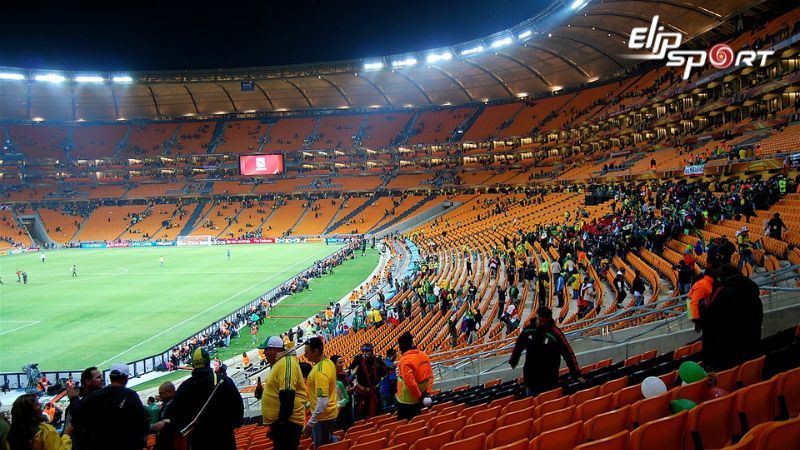
In the vibrant world of sports, few places hold as much significance and emotional weight as Soccer City. This iconic stadium has transcended its primary function as a venue for soccer matches to become a symbol of national pride, unity, and cultural identity. From hosting international tournaments to being the home of local heroes, Soccer City stands at the heart of the game, reflecting both the sport’s rich history and its promising future. In this blog post, we will delve deep into the multifaceted aspects of Soccer City, exploring its historical context, architectural brilliance, cultural impact, and its role in shaping the modern landscape of soccer.
The Historical Significance of Soccer City
Understanding the essence of Soccer City requires a glimpse into its historical backdrop. This section aims to shed light on the moments that have shaped this legendary stadium and the rich tapestry of stories intertwined with it ABC8.
Origins of Soccer City
Soccer City was born out of a vision to create a world-class venue that would not only host soccer matches but also serve as a gathering place for communities. The inception of this stadium can be traced back to the late 1980s when South Africa was on the brink of monumental changes.
As apartheid began to wane, there was an increasing need for spaces that could bring people together, fostering a sense of unity across different racial and cultural lines. The stadium’s design mirrored this aspiration, creating an environment where diverse groups could celebrate their shared passion for soccer. The opening of Soccer City marked a pivotal moment in South African sports history, serving as a beacon of hope and progress.
Key Moments in Soccer City’s History
Over the years, Soccer City has witnessed countless unforgettable moments. It has been the stage for thrilling matches that have not only entertained but also inspired legions of fans.
One of the most notable events was the 2010 FIFA World Cup, where Soccer City hosted the opening match and the final. The excitement surrounding the tournament brought a palpable energy to the city, with fans from all corners of the globe descending upon Johannesburg. This event solidified Soccer City’s reputation as a premier sporting venue and showcased South Africa’s potential to host major international events. Furthermore, the legacy of the World Cup continues to resonate, as it marked a milestone not just for the stadium but for the nation as a whole, emphasizing South Africa’s capacity to unite through sport.
The Role of Soccer City in Promoting Unity and Identity
Soccer City is more than just a stadium; it embodies the spirit of South Africa’s struggle for equality and its journey towards reconciliation. The stadium has acted as a platform for various social movements, leveraging the powerful influence of soccer to drive change.
Through initiatives such as community outreach programs and youth development schemes, Soccer City plays a vital role in nurturing young talent and promoting social cohesion. The stadium’s continued commitment to these causes demonstrates its belief in the power of sport to transform lives and instill a sense of belonging among individuals from diverse backgrounds.
Architectural Brilliance of Soccer City
The design and architecture of Soccer City are as captivating as its history. This section will explore the innovative elements that define the stadium and discuss how its architectural features contribute to the overall experience of attending a match.
Designing for the Future
Soccer City’s design is a masterclass in blending form and function, with architects drawing inspiration from traditional African motifs. The exterior resembles an African calabash, a symbol of hospitality, which resonates deeply with the culture of the region.
This thoughtful design choice not only reflects the heritage of the land but also creates a profound connection between the stadium and its community. As visitors approach Soccer City, they are greeted by a structure that feels both familiar and extraordinary, creating an atmosphere that is inviting and exhilarating.
Sustainability and Modern Technology
In an era where sustainability is of utmost importance, Soccer City excels in its efforts to minimize environmental impact. The stadium incorporates several eco-friendly technologies, including rainwater harvesting systems and energy-efficient lighting, showcasing a commitment to green practices.
Moreover, the integration of modern technology enhances the fan experience, with high-definition screens, state-of-the-art sound systems, and advanced security measures ensuring that every match is not just an event but a memorable experience. This harmonious blend of tradition and innovation positions Soccer City as a forward-thinking venue that sets the standard for modern stadiums worldwide.
Fan-Centric Amenities
Beyond its striking architecture and sustainable features, Soccer City prioritizes the experience of its visitors. The stadium is equipped with a plethora of amenities designed to cater to fans’ needs and ensure a comfortable visit. From family-friendly areas to dedicated spaces for disabled fans, Soccer City strives to create an inclusive environment.
Additionally, the variety of food and beverage options available within the stadium reflects South Africa’s rich culinary diversity, allowing fans to indulge in local flavors while enjoying the beautiful game. This focus on inclusivity and quality enhances the overall atmosphere, making each match a celebration of sport and culture.



